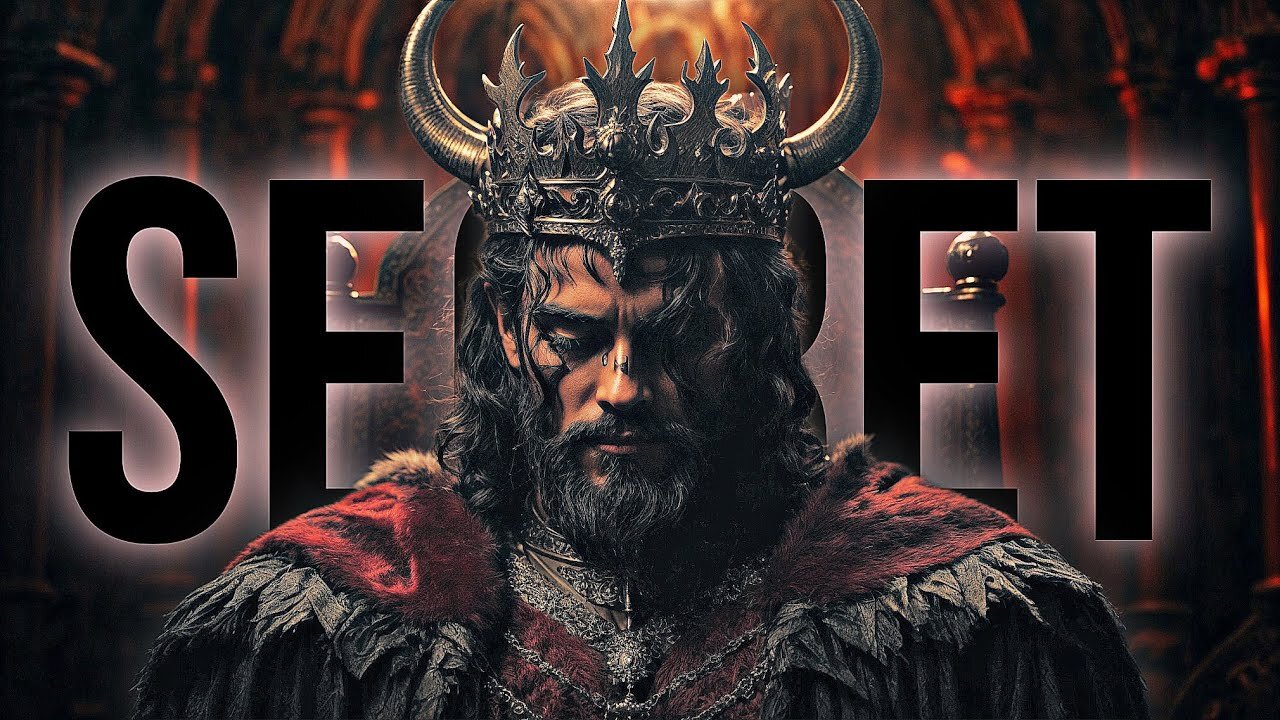Premium Only Content

Sons of God: SECRET History. An Extremely Deep Dive Into History, Myth & Ancient Mysteries
Sons of God: SECRET History. An Extremely Deep Dive Into History, Myth & Ancient Mysteries. Full Documentary
-
178,967 views July 12, 2023
Gnostic Informant TV
-
FAIR USE FOR EDUCATIONAL PURPOSES
-
Mirrored From:
https://www.youtube.com/@GnosticInformantTV
-
As applied in the scholarly literature, "dying and rising gods" is a generic appellation for a group of male deities found in agrarian Mediterranean societies who serve as the focus of myths and rituals that allegedly narrate and annually represent their death and resurrection. Beyond this sufficient criterion, dying and rising deities were often held by scholars to have a number of cultic associations, sometimes thought to form a "pattern." They were young male figures of fertility; the drama of their lives was often associated with mother or virgin goddesses; in some areas, they were related to the institution of sacred kingship, often expressed through rituals of sacred marriage; there were dramatic reenactments of their life, death, and putative resurrection, often accompanied by a ritual identification of either the society or given individuals with their fate. The category of dying and rising gods, as well as the pattern of its mythic and ritual associations, received its earliest full formulation in the influential work of James G. Frazer The Golden Bough, especially in its two central volumes, The Dying God and Adonis, Attis, Osiris. Frazer offered two interpretations, one euhemerist, the other naturist. In the former, which focused on the figure of the dying god, it was held that a (sacred) king would be slain when his fertility waned. This practice, it was suggested, would be later mythologized, giving rise to a dying god. The naturist explanation, which covered the full cycle of dying and rising, held the deities to be personifications of the seasonal cycle of vegetation. The two interpretations were linked by the notion that death followed upon a loss of fertility, with a period of sterility being followed by one of rejuvenation, either in the transfer of the kingship to a successor or by the rebirth or resurrection of the deity. There are empirical problems with the euhemerist theory. The evidence for sacral regicide is limited and ambiguous; where it appears to occur, there are no instances of a dying god figure. The naturist explanation is flawed at the level of theory. Modern scholarship has largely rejected, for good reasons, an interpretation of deities as projections of natural phenomena. Nevertheless, the figure of the dying and rising deity has continued to be employed, largely as a preoccupation of biblical scholarship, among those working on ancient Near Eastern sacred kingship in relation to the Hebrew Bible and among those concerned with the Hellenistic mystery cults in relation to the New Testament. Despite the shock this fact may deal to modern Western religious sensibilities, it is a commonplace within the history of religions that immortality is not a prime characteristic of divinity: Gods die. Nor is the concomitant of omnipresence a widespread requisite: Gods disappear. The putative category of dying and rising deities thus takes its place within the larger category of dying gods and the even larger category of disappearing deities. Some of these divine figures simply disappear; some disappear only to return again in the near or distant future; some disappear and reappear with monotonous frequency. All the deities that have been identified as belonging to the class of dying and rising deities can be subsumed under the two larger classes of disappearing deities or dying deities. In the first case, the deities return but have not died; in the second case, the gods die but do not return. There is no unambiguous instance in the history of religions of a dying and rising deity. The rituals of Adonis, held during the summer months, are everywhere described as periods of intense mourning. Only late texts, largely influenced by or written by Christians, claim that there is a subsequent day of celebration for Adonis having been raised from the dead. The earliest of these is alleged to be the second-century account of Lucian (Syrian Goddess 6–7) that, on the third day of the ritual, a statue of Adonis is "brought out into the light" and "addressed as if alive"; but this is an ambiguous report. Lucian goes on to say that some think the ritual is not for Adonis but rather for some Egyptian deity. The practice of addressing a statue "as if alive" is no proof of belief in resurrection; rather it is the common presupposition of any cultic activity in the Mediterranean world that uses images. Besides, Lucian reports that after the "address" women cut their hair as a sign of mourning.
-
 2:15:52
2:15:52
Steven Crowder
6 hours agoWho is the Real Myron Gaines | Ash Wednesday
271K312 -
 1:07:53
1:07:53
Sean Unpaved
2 hours agoRankings, Recaps, & Deadline Deals: CFB Shake-Ups & NFL Trades
22.2K -
 2:13:33
2:13:33
Side Scrollers Podcast
4 hours agoAsmongold SUED for Emotional Distress + Hasan REJECTED+ INSANE Plane Crash + More | Side Scrollers
26.4K6 -
 1:00:32
1:00:32
VINCE
6 hours agoNYC Has Been Seized By The Communists | Episode 162 - 11/05/25
230K355 -
 1:47:26
1:47:26
LadyDesireeMusic
4 hours agoLive Piano & Convo Rumble Rants/ Subs to Request
19.4K2 -
 5:02:14
5:02:14
SOLTEKGG
5 hours agoGOING FOR KILL RECORD - BF6 SKIN Giveaway
15.5K1 -
 1:04:48
1:04:48
The Rubin Report
4 hours agoCharlie Kirk’s Warning for MAGA if Mamdani Won
46.8K172 -
 1:33:32
1:33:32
Graham Allen
6 hours agoTold You The War Was FAR From Over… The Blue Wave Just Proved It! Evil Is Fighting Back!
128K109 -
 2:54:17
2:54:17
Badlands Media
12 hours agoBadlands Daily: November 5, 2025 – Election Illusions, Filibuster Fallout & The Deep State’s Next Move
115K20 -
 3:01:00
3:01:00
Wendy Bell Radio
10 hours agoLike Sheep To Slaughter
138K128